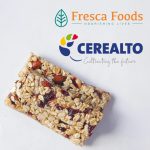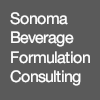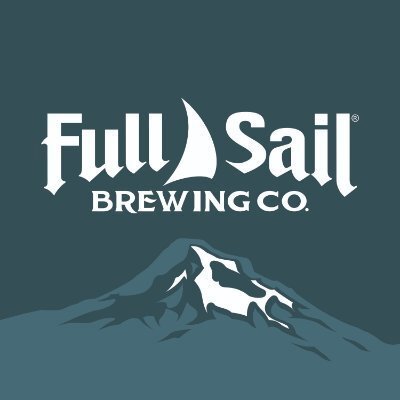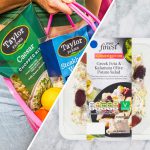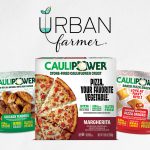Betting On Breast Milk: Is Lactoferrin CPG’s Newest Functional Ingredient Obsession?

Is pink gold, a protein most often associated with breast milk, the next big functional ingredient coming to food and beverage?
Most of the bioactive protein lactoferrin produced for supplements and infant formula is derived from cow’s milk. A number of food tech companies are using precision fermentation technology to genetically modify yeast into mini lactoferrin factories that will bring the cost of the ingredient down and make it more readily available to consumers across a variety of food and beverage products.
Lactoferrin is a protein present in human and bovine milk as well as saliva, tears and nasal secretions. It helps regulate iron in the digestive tract, supports bone health and has shown immune system benefits including preventing oxidative stress damage. It is abundant in human breast milk — especially colostrum — but can be purified in an expensive process from bovine sources as well.
“Cows aren’t bioreactors,” said Laura Katz, founder and CEO of biotechnology company Helaina. “They’re also not humans, so they don’t actually produce very much lactoferrin, and the structure and the function is different from the native human [lactoferrin].”
The New York City-based food tech business announced the close of a $45 million Series B funding round last month as it continues to scale its “human equivalent bioactive protein” production. In total, Helaina has raised $83 million with the most recent round led by Avidity Partners, with additional investment from Spark Capital, Ingeborg Investments, Tom Williams of Heron Rock, Barrel Ventures, Siam Capital, Relish Works, CF Private Equity and Primary Venture Partners, among others.
The new capital will enable Helaina to bring its novel ingredient, effera Human Lactoferrin, to functional food and beverage brands with a focus on the women’s health, nutritional supplement and human aging categories.
“We have the right to win in women’s health, and what I mean by that is I think that our effera will have the biggest impact throughout the entire journey of a woman’s health, especially because it’s constantly changing and evolving,” Katz said.
The company has already lined up supply partnerships with Kroma Wellness, The Feed, Levelle Nutrition, Healthgevity and Mitsubishi International Food Ingredients. Helaina has been operating at commercial scale since spring 2023 with effera currently available in the U.S. and working through regulatory approvals in other global markets.
Katz said that demand for lactoferrin is on the rise and the company is using its new capital infusion to meet that global demand and, in the process, double the global supply of the active ingredient in the next five to seven years.
Helaina is not the only company raising new capital to meet the demand for lactoferrin. De Novo Foodlabs recently also announced new investment in a round led by sustainable protein venture capital firm Joyful Ventures that brought De Novo’s total investment to $4 million. Founded in 2021, the Raleigh, N.C.-based company’s Nanoferrin product aims to help meet global demand for bovine lactoferrin, valued at $773 million in 2023 and projected to grow annually by 15.8% over the next decade, according to Future Market Insights.
Many lactoferrin applications revolve around making a less-expensive but equally nutritious alternative to breast milk. Targeting the infant formula category can be time-intensive and expensive due to the regulatory hurdles that come with children’s health supplements.
Yet, after the infant formula shortage of 2022, finding scalable and sustainable alternatives to the current supply chain is integral to mitigating future disruptions. This summer, the National Academies of Sciences, Engineering, and Medicine published a 400-page report on the 2022 shortage and offered insights into how federal agencies could help reduce the risk of another industry shortage that endangers infant health.
The U.S. infant nutrition market is expected to hit $13.8 billion in 2024 and is forecast to reach $20.4 billion by 2031, growing at a CAGR of 5.5% during the time period, according to market research from CoherentMI.
Through a different process using cell-cultured technology, biotech startup BIOMILQ is also seeking to solve the cost implications for making infant formula and human breast milk more readily available.
Still in pilot production, BIOMILQ is hoping to sell its ingredient to infant formula brands.
Taking a slightly different approach, TurtleTree Labs makes an animal-free version of bovine lactoferrin and is targeting the “established market” for its Lactoferrin+ (LF+) product, said TurtleTree chief scientific officer Dr. Aletta Schnitzler.
“It’s cow’s milk lactoferrin that is currently used in infant formula,” she said, referring to why the company is focused on a substitute for bovine instead of the human lactoferrin. “It’s just been much more widely studied. We see that as introducing a functional equivalent of something that’s closer to what’s already in the food system.”
Founded in 2019 by Singaporean Lin Fengru, the company has scaled its production to a point where it is in the process of implementing LF+ in a number of CPG beverage applications with its sights set on applications in food and supplements eventually.

Around Thanksgiving, TurtleTree will be releasing its first commercial product in partnership with Cadence Cold Brew. The functional espresso shot will be marketed to female endurance athletes, aiding muscle recovery and inflammation while emphasizing the iron regulation advantages to lactoferrin. The product will be available in Salted Caramel and Original flavors.
In 2025, TurtleTree is set to release at least two products with animal-free dairy producer Strive. The multi-year strategic partnership includes an immunity support beverage positioned towards aging adults. The 8 oz. cartons will have 12 to 15 grams of fermentation-derived whey protein and 250 mg of LF+. Additionally, the two companies will be launching a ready-to-mix protein powder.
Eventually, TurtleTree would like to move into baby formula, but the broader CPG partnerships offer a “revenue engine” to scale and provide proof of concept that “there is a real benefit [of lactoferrin] to the entire lifespan, Schnitzler said.
“I would not call the adult nutrition realm a stepping stone or just a means to an end,” she said. “Infant nutrition is a longer path, but as a business we want to bring something to market quickly.”



